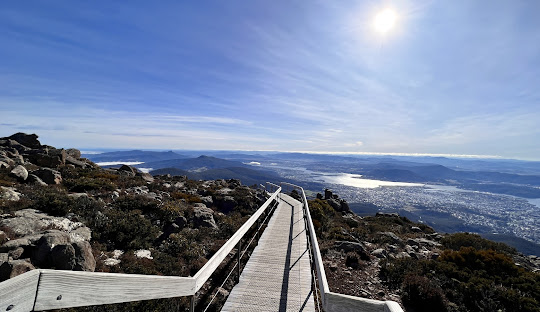
From Mountain Trails to Coastal Walks: Hobart’s Natural Oasis Flourishes Across the City
Posted by on
Hobart’s identity is deeply rooted in its natural environment, with the city embracing an exceptional variety of parks, gardens, and bushland reserves. The centerpiece of this green network is Wellington Park, encompassing kunanyi / Mount Wellington and its surrounding alpine woodlands. This vast wilderness area offers countless opportunities for bushwalking, hiking, and mountain biking, with trails weaving through thick forests and tracing stream beds like those in Lambert Park, Tolosa Park, and the Hobart Linear Park near Cascade Gardens. Elevated paths, such as those in the Truganini Conservation Area and Bicentennial Park, lead to scenic lookouts offering sweeping views of the Derwent estuary.
Another signature feature of Hobart’s natural infrastructure is the Queens Domain, a centrally located expanse of urban bushland. This domain houses the Royal Tasmanian Botanical Gardens, founded in 1818, which remains a beloved attraction with curated plant collections, heritage buildings, and seasonal displays. Nearby, the Hobart Cenotaph, accessed via the Bridge of Remembrance, stands as a solemn landmark surrounded by recreational spaces like the Hobart Regatta Grounds, which seamlessly link to the Intercity Cycleway. The Domain also supports cultural and sports facilities including the University Rose Gardens, Domain Athletic Centre, and Doone Kennedy Hobart Aquatic Centre. While the original Hobart Zoo no longer operates here, Bonorong Wildlife Sanctuary in Brighton now serves as the city’s key wildlife attraction.
Across the river, Hobart’s eastern shore is lined with coastal parks and headland trails, including Kangaroo Bluff, a repurposed coastal defense site, and Kangaroo Bay Parkland, near the Rosny Parklands. Other green spaces dotting the suburbs include Anzac Park and Simmons Park in Lindisfarne, Wentworth Park at Howrah Beach, and scenic hillside reserves such as Rosny Hill, Natone Hill, and Waverly Flora Park.
Within the city, urban parks and pocket gardens blend into the civic fabric. Notable examples include St David’s Park, Franklin Square, Salamanca Gardens, and Princes Park—known to locals as Boat Park. The city's expansion over time has introduced community-focused spaces like the Garden of Memories on Elizabeth Street, Caldew Park (popularly called the Train Park) in West Hobart, Wellesley Park in South Hobart, and Soundy Park and the Cultural Skatepark in North Hobart.
Hobart’s parklands trace the complex shoreline of the Derwent, connecting a diverse patchwork of habitats and cultural spots. From Goulds Lagoon, a haven for birdwatchers in the north, to artistic attractions like the Glenorchy Art and Sculpture Park (GASP) and the Montrose Boardwalk, the city’s green spine stretches into Moorilla Estate, Windermere Beach, Battery Point Sculpture Trail, Errol Flynn Reserve, Nutgrove Beach, and Alexandra Battery near Kingston Park.
Through careful integration of conservation and community access, Hobart’s extensive park network continues to serve as a living tapestry of biodiversity, recreation, and heritage, making it one of Australia’s most naturally enriched cities.